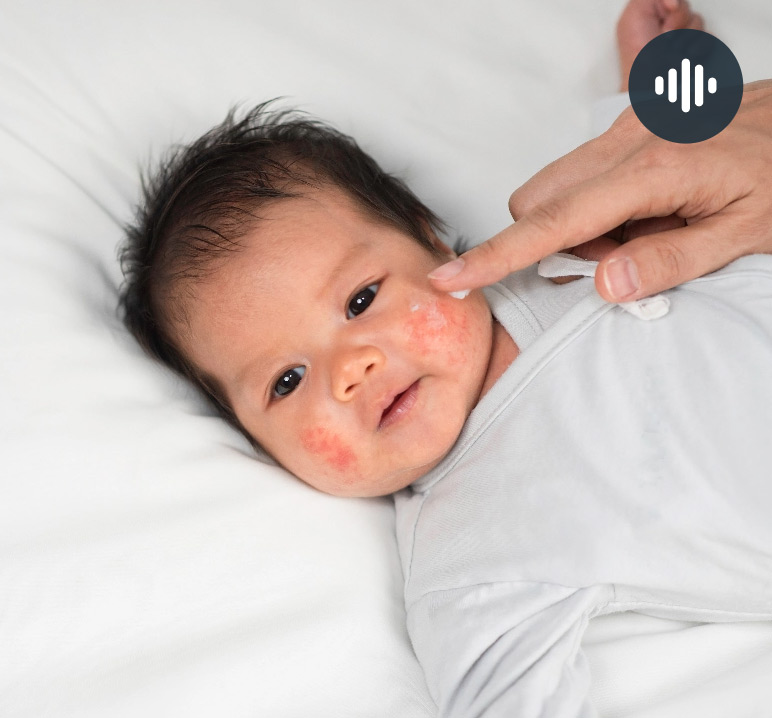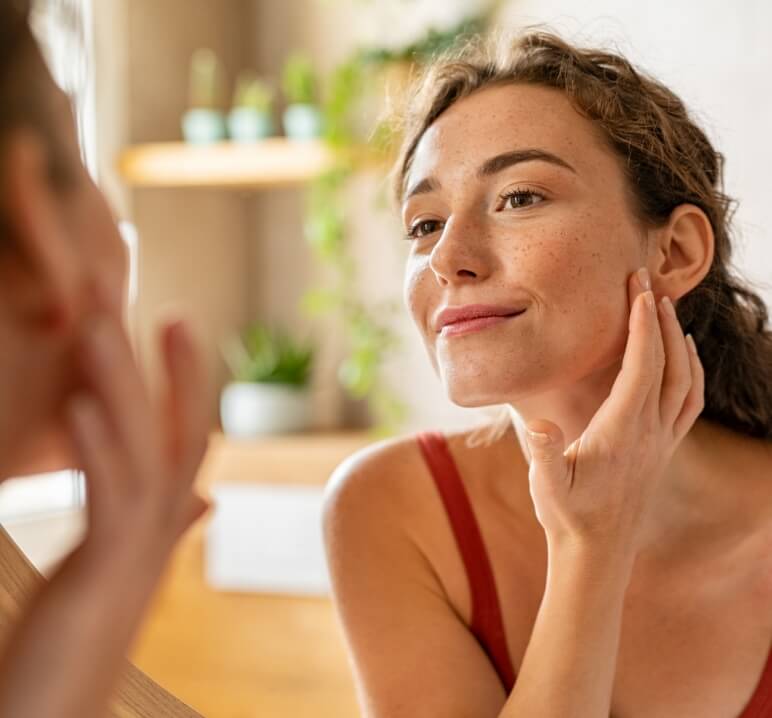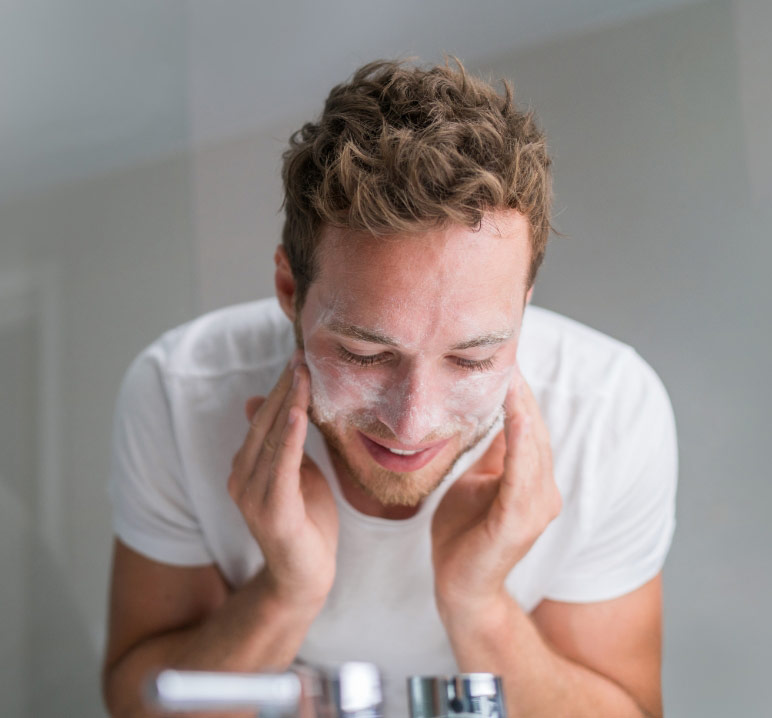x
It produces too much natural oil (sebum).
- Shiny aspect
- Uneven texture
- Enlarged pores
- Pimples or blackheads
x
It doesn't produce enough natural oil (sebum).
- Tightness or itching
- Redness or irritation
- Tight pores
- Dead skin (desquamation)
COMBINATION
+
x
Combination
Some parts are dry and some others are oily.
- Shiny aspect in the T zone
- Tightness or redness elsewhere
- Uneven texture
NORMAL
+
x
NORMAL
It produces just enough natural oil (sebum).
- Generally smooth
- Even texture
- Hardly visible pores
How to find the ideal sunscreen for your skin type?
+
x
Pick your formula. Dry skin likes rich textures, while oily and combination skins prefer light and mattifying formulas. Sensitive skin needs extra-gentle products.
Look for the right composition. Sunscreens can contain active ingredients that nourish the skin (vegetable oils), moisturize it (hyaluronic acid) or soothe it (thermal water).
Find your filter. Mineral filters act as shields and push UV rays away from the surface of the skin. Chemical filters, for their part, absorb rays like sponges.
What are the best practices to protect your skin from the sun?
+
x
Apply your sunscreen with care. About 15 minutes before going out, apply a good amount of sunscreen on every zone that will be exposed to the sun (don't forget your ears and lips!). Repeat every two hours - more if you go swimming or sweat a lot.
Use the right SPF. The sun protection factor takes into account the amount of time for which a sunscreen can protect the skin and the proportion of UVB rays it can block. For an optimal protection, pick a product with an SPF of at least 30 and a broad spectrum, that protects both from UVA and UVB rays.
Medication and sun: what is there to know?
+
x
Some medications can increase skin sensitivity to sunlight and cause reactions.
This medications are of many types: antibiotics, anti-inflammatory, oral contraceptives, etc.
How to prevent reactions? You can take several measures: reducing your exposure to sunshine, wear long clothes and wide-brimmed hats... and apply a good sunscreen whenever you go out, of course.
Skincare for everyone
Are you looking for the best skincare routine for your skin type? Our cosmetic specialists have custom tips.
There are many beliefs about skincare. Which ones are true?
Sun protection is mandatory at all times.
x
True.
Sun protection is mandatory at all times.
UV rays are always there: they pass through clouds and windows, they reflect on snow... That's why it's so important to apply a sunscreen with an SPF of 30 or more daily, whatever the season or the weather. It's an essential gesture to keep the skin healthy, slow down its aging process and prevent the appearance of dark spots.
Anti-aging products aren't necessary at 25.
x
False.
Anti-aging products aren't necessary at 25.
You can start using anti-aging formulas early to prevent the signs of aging (loser and dryer skin, small lines and wrinkles, dark spots, loss of radiance, etc.). "Rejuvenating" ingredients like vitamin C and E, hyaluronic acid, collagen peptids and fruit acids are beneficial for every skin anyway!
A good skincare routine must include a lot of products.
x
False.
A good skincare routine must include a lot of products.
In fact, combining too many ingredients and formulas can overstimulate the skin and cause reactions like redness, dryness, irritation, pimples, etc.
You can create an efficient routine with five products that fit your skin's needs: a cleanser, a tonic, a moisturizer, an exfoliant and, of course, a good sunscreen.
Do you have questions about a skin problem? Your pharmacist owner affiliated to Brunet is here for you - because good advice helps you feeling good.



